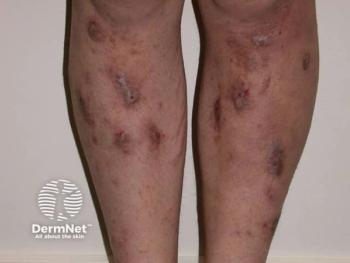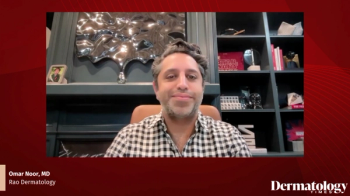
Difficult forms of psoriasis respond well to anti-PDE4
Initial improvements in difficult-to-treat forms of psoriasis persisted for a year with the phosphodiesterase 4 (PDE4) inhibitor apremilast (Otezla, Celgene Corp.), according to data from two recent trials. Learn more.
Initial improvements in difficult-to-treat forms of
According to a report in
A majority of placebo-treated patients who responded to the PDE4 inhibitor after crossover also maintained the improvement at 52 weeks, although numbers were comparatively small, according to study author Jeffrey Crowley, M.D., a Bakersfield, Calif.. dermatologist.
Dr. Crowley reported to MedPage Today that the results suggest that apremilast has “reasonable efficacy at the primary endpoint, with maintenance of efficacy coupled with a strong safety profile. It is a good initial option for patients with moderate to severe plaque psoriasis.”
The data was generated by follow-up analysis of the ESTEEM 2 study, one of two trials that served as the basis for submission to the Food and Drug Administration. The trial involved about 400 patients who were randomized to apremilast or placebo, with the primary endpoint of determining the portion of patients who achieved at least 75% improvement on the Psoriasis Area and Severity Index (PASI) after 16 weeks.
The study was designed to observe and analyze specific difficult-to-treat parts of the body, such as the scalp, nails and palmoplantar areas. In addition to PASI assessment, patient response to treatment was evaluated using the Nail Psoriasis Severity Index (NAPSI), Scalp Physician Global Assessment (ScPGA) and the Palmoplantar Psoriasis Physician Global Assessment (PPPGA).
The 16-week data showed that nail psoriasis improved by 29% in the apremilast group, compared with 7% in the placebo group. Nearly 41% of the apremilast group had ScPGA scores of 0 or 1 (clear or minimal), compared with just over 17% in the placebo group. The PPPGA scores were 65.4% for the apremilast group and 31.3% for the placebo group.
The data also showed that patients who had 50% improvement in NAPSI at 16 weeks maintained the improvement to 52 weeks in 68.6% of cases. Of the patients who had ScPGA scores of 0 or 1 at 16 weeks, 62.5% maintained the score at 52 weeks. Of 17 patients who had PPPGA scores of 0 or 1 at 16 weeks, four continued through 52 weeks and maintained scores of 0 or 1.
Celgene supported the ESTEEM trials, and some of the investigators were Celgene employees.
Disclosure:
Dr. Crowley has a relevant relationship with Celgene and other pharmaceutical firms.
Newsletter
Like what you’re reading? Subscribe to Dermatology Times for weekly updates on therapies, innovations, and real-world practice tips.


















